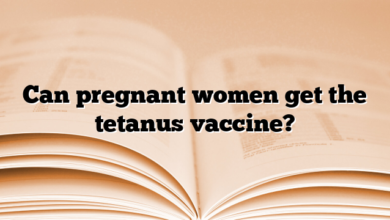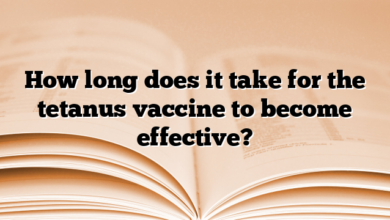Tetanus and Animal Bites: Risks and Preventive Measures
Introduction
Tetanus is a serious bacterial infection caused by the Clostridium tetani bacterium. While tetanus can be contracted through various means, including animal bites, it is essential to understand the risks associated with such incidents and the preventive measures that can be taken to minimize the chances of infection. In this article, we will explore the specific risks of tetanus related to animal bites and discuss the preventive measures that individuals should take.
The Risks of Tetanus from Animal Bites
Animal bites, especially those from animals such as dogs, cats, and wild animals, can introduce the tetanus bacteria into the body. Tetanus spores are commonly found in the environment, including in the soil and the digestive tracts of certain animals. When an animal bite occurs, the bacteria can enter the wound, potentially leading to tetanus infection if the wound is not properly cared for and if the individual has inadequate immunity against tetanus.
Preventive Measures for Tetanus After an Animal Bite
- Clean the Wound Thoroughly: Immediately after an animal bite, it is crucial to clean the wound thoroughly with soap and water. Use mild pressure to remove any dirt, debris, or saliva that may be present. This step helps reduce the number of bacteria present in the wound.
- Apply Antiseptic: After cleaning the wound, apply an antiseptic solution to further disinfect the area. Antiseptic solutions such as hydrogen peroxide or povidone-iodine can help kill any remaining bacteria on the surface of the wound.
- Seek Medical Attention: Regardless of the severity of the bite, it is important to seek medical attention promptly. A healthcare professional will assess the wound, administer appropriate tetanus prophylaxis if necessary, and provide further guidance on wound care and management.
- Tetanus Vaccination: If an individual has not received a tetanus vaccine within the past five years, a tetanus toxoid booster shot may be recommended as part of the post-animal bite care. Tetanus vaccination helps provide immunity against the infection and reduces the risk of tetanus-related complications.
- Observation and Follow-up: After receiving initial medical care, it is important to closely monitor the wound for any signs of infection or tetanus symptoms. Follow any instructions provided by the healthcare professional and attend follow-up appointments as advised.
Frequently Asked Questions (FAQs)
Q: Can all animal bites lead to tetanus?
A: While all animal bites have the potential to introduce tetanus bacteria, the risk varies depending on various factors, including the type of animal, the severity of the bite, and the cleanliness of the wound. Proper wound care and vaccination can significantly reduce the risk.
Q: How long does it take for tetanus symptoms to appear after an animal bite?
A: Tetanus symptoms typically appear within 3 to 21 days after exposure, but they can manifest earlier or later in some cases. Seeking medical attention promptly after an animal bite is crucial, regardless of the presence of symptoms.
Q: Is tetanus vaccination necessary if the animal is vaccinated?
A: Tetanus vaccination is still necessary after an animal bite, even if the animal is vaccinated. The presence of tetanus bacteria in the environment increases the risk of infection, and vaccination provides additional protection.
Q: Are certain individuals more susceptible to tetanus from animal bites?
A: Individuals with incomplete or inadequate tetanus vaccination history are more susceptible to tetanus infection. Additionally, individuals with compromised immune systems or underlying medical conditions may have a higher risk.
Q: Can tetanus be transmitted from human to human through bites?
A: No, tetanus is not transmitted from human to human. It is primarily caused by the introduction of the bacteria into a wound from the environment, such as through animal bites.
Conclusion
Animal bites carry the risk of tetanus infection, emphasizing the importance of prompt wound care and appropriate medical attention. Cleaning the wound thoroughly, applying antiseptic, seeking medical care, and ensuring tetanus vaccination are vital steps to minimize the risk of tetanus after an animal bite. By taking preventive measures and staying up-to-date with tetanus vaccination, individuals can protect themselves from this potentially life-threatening infection.




